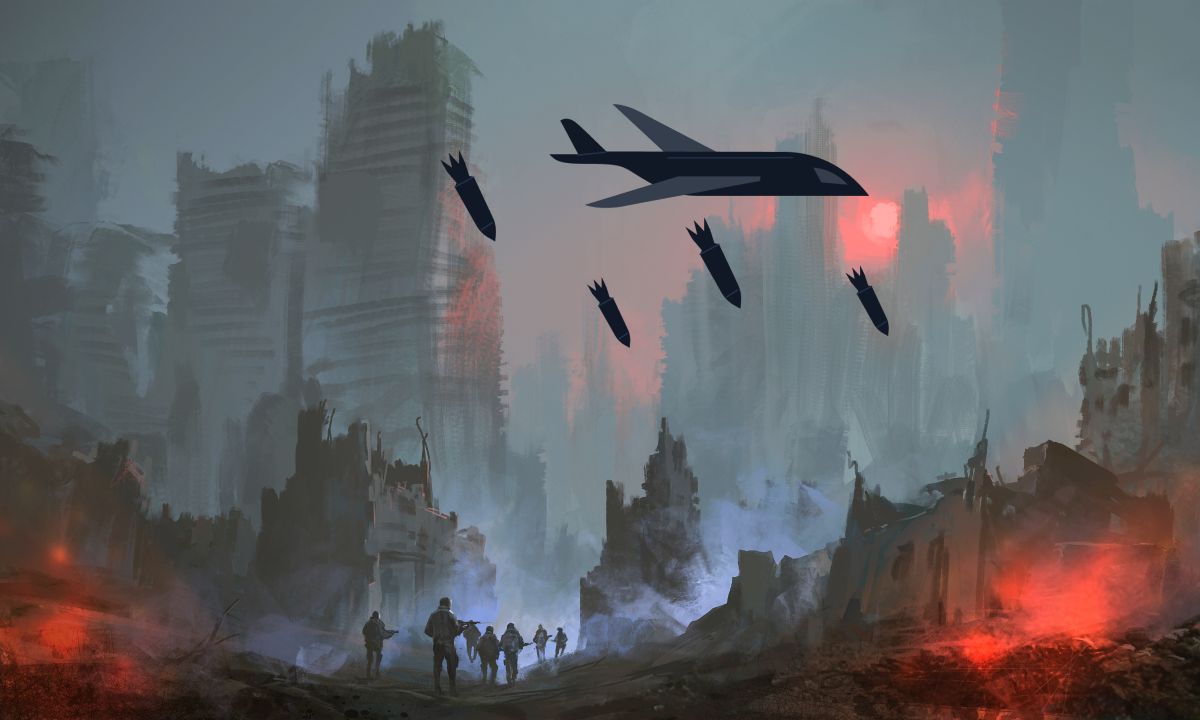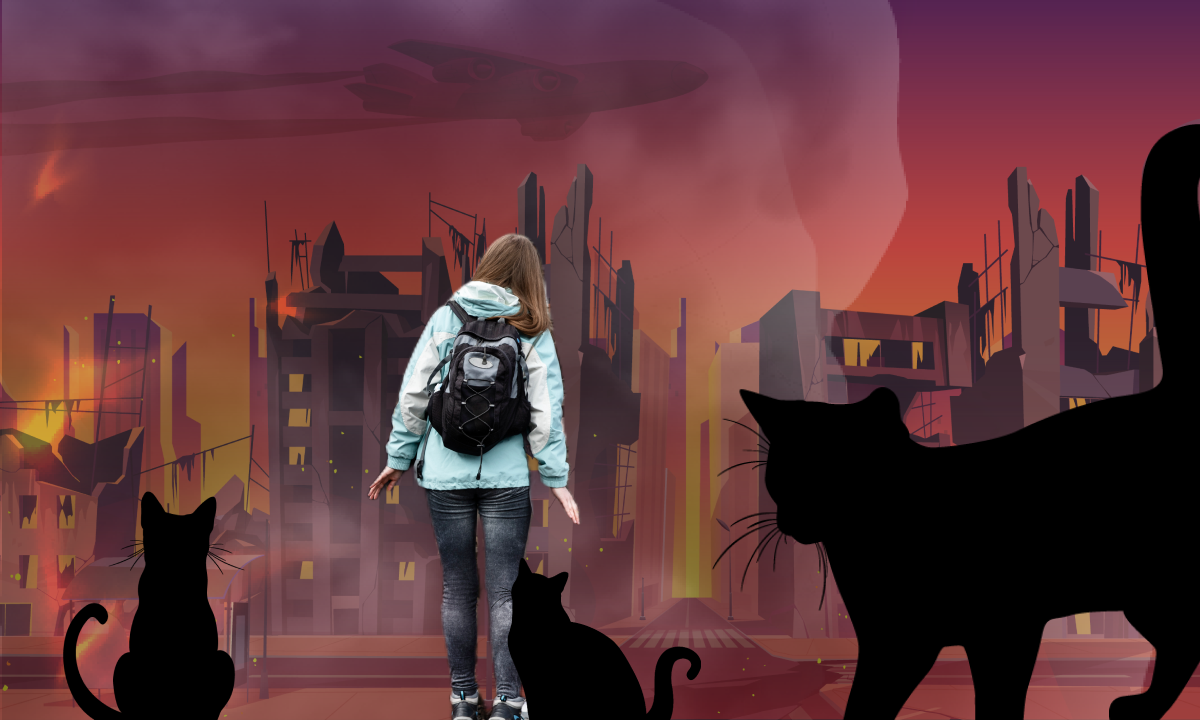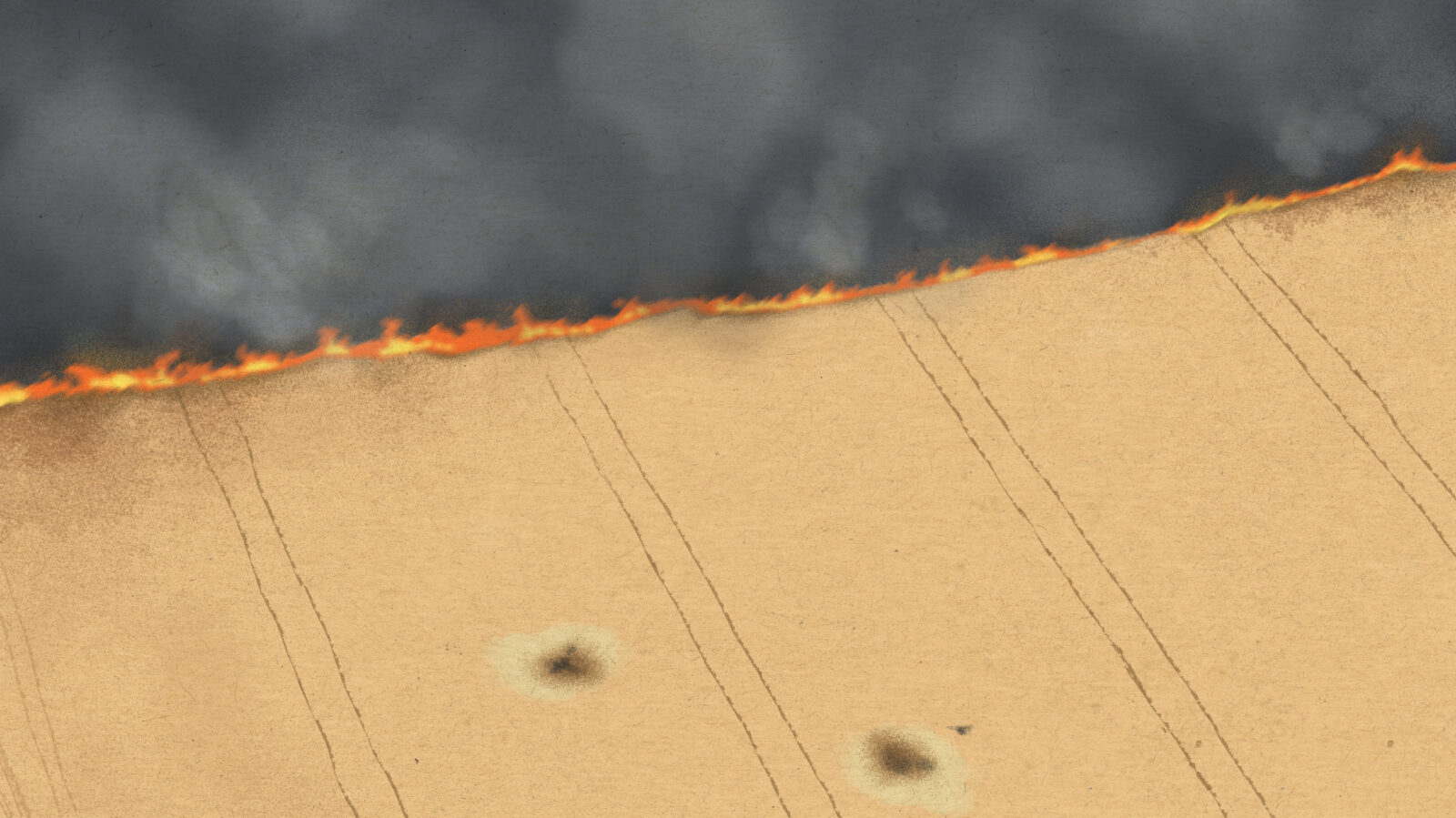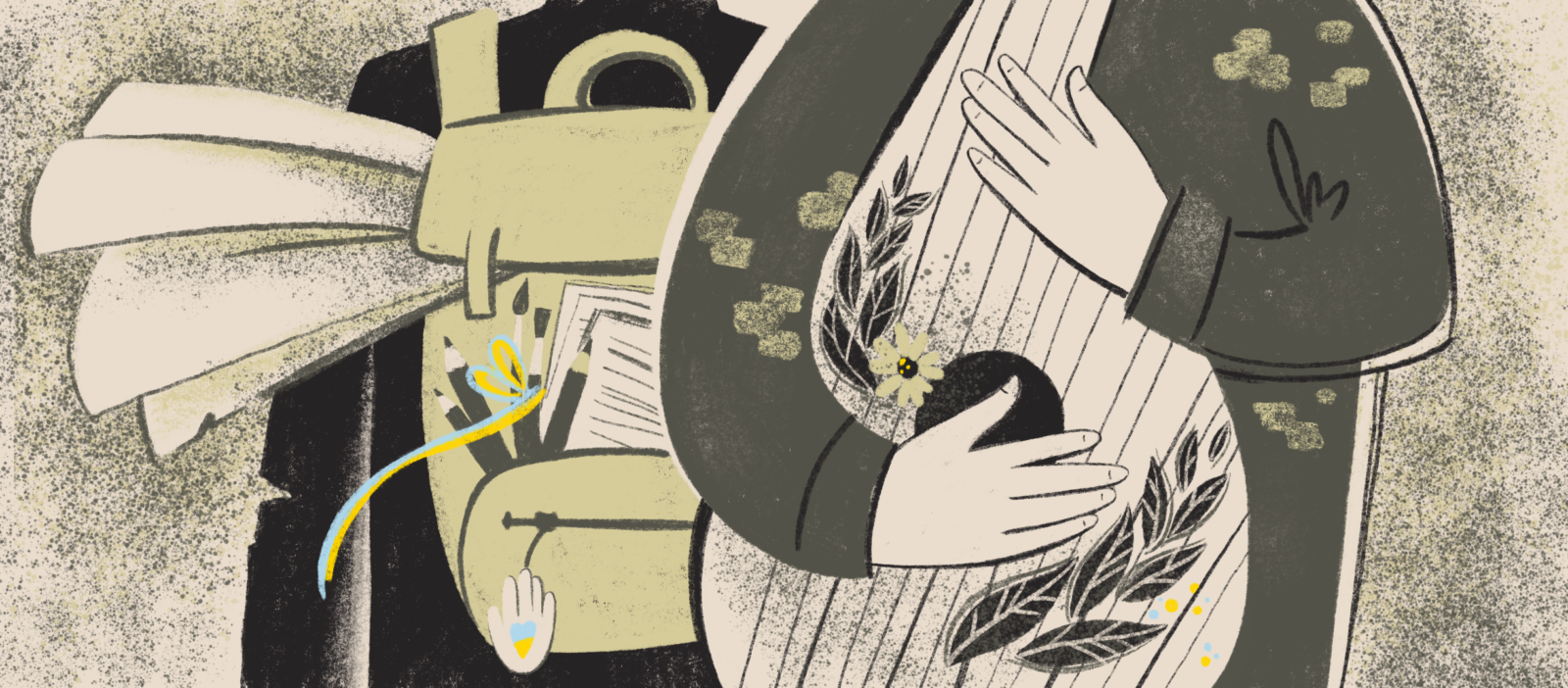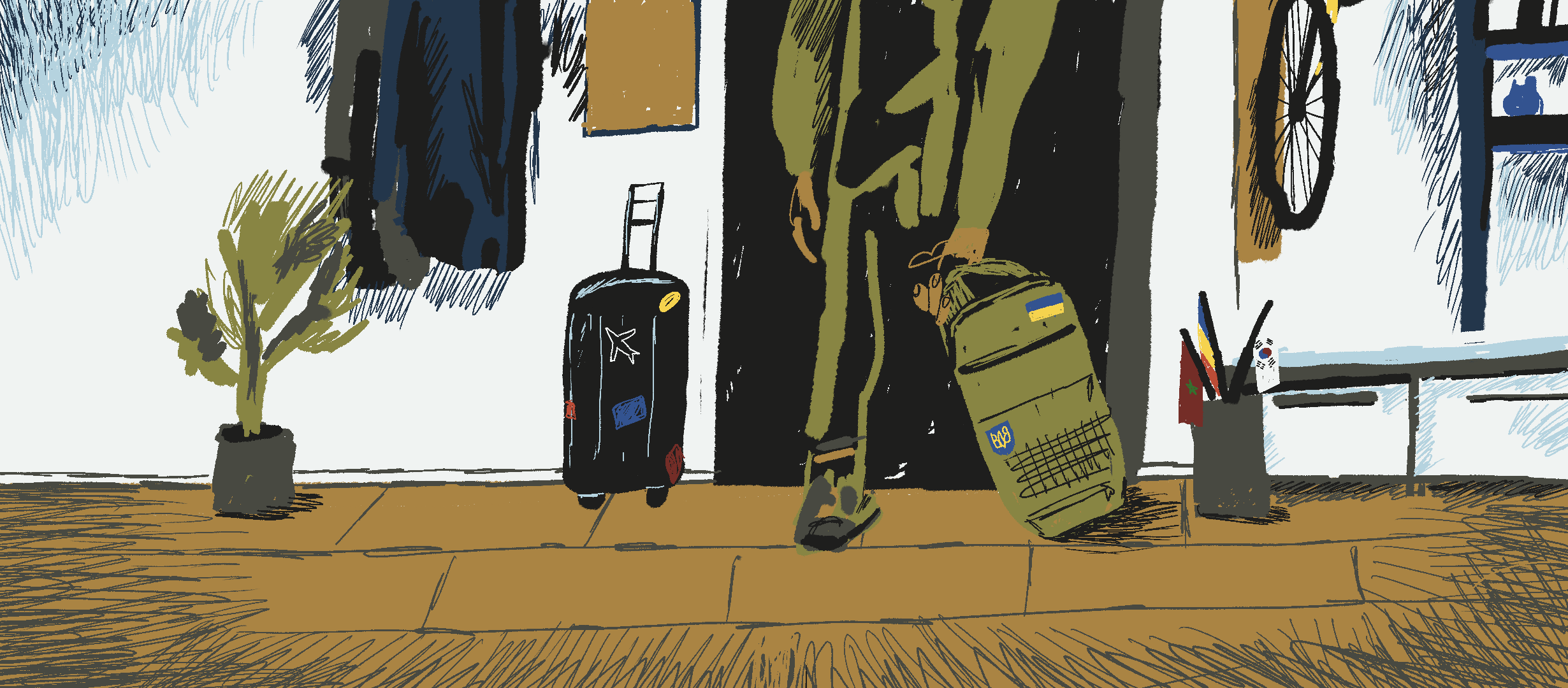Illustrated by Yelyzaveta Berestova
“I hear gunshots. Grab my things fast. It’s only a short walk to the cellar where we’re hiding. These few steps cause blisters on my feet. When I step on them, my skin breaks. It’s unbearably painful,” Iryna says.
People like Iryna are called butterflies. Their skin may be damaged with a single careless touch. Then blisters appear, they burst and turn into open wounds, lighter or deep. “Epidermolysis bullosa itself is a war,” the girl says. Her struggle with an incurable rare disease has been going on for 25 years—that is, all her life. Now she has a war at war.
From the very first day of Russia’s full-scale invasion of Ukraine, Russian military vehicles endlessly move through the village in Sumy Region where Iryna and her family live.
“I can see BUKs, Grads, self-propelled artillery, BTR tanks. The ground shakes as they are moving. It seems that you can fall any minute. The first few days I cried so much that my eyes got inflamed. I just couldn’t open them for three days. I was on painkillers all these days. Now I have the last vial of drops left. I cannot cry anymore,” Ira says.
At first, Russian vehicles were just moving through the village. Then the shelling started. Now there is a Russian checkpoint in the village.
“No, we are scared of everything, any rustle. Russians are wandering here and there. Someone’s window was shot through, someone’s barn was blown up. They fired at the electricity transformer and gas pipes. Thank God they didn’t come to our house. My mom would have a heart attack in that case,” Ira says. “In a nearby village, a local man wanted to stop a tank with his bare hands, so he was shot. It’s very difficult to get out of here.”
Ira’s life depends on special dressings, ointments, and therapeutic nutrition. Every day, wounds on her back, arms and legs have to be treated. Getting medicine was not easy even in peacetime. And now it’s almost impossible.
“We try to save ointments. But then the bandages stick to the wounds. Everything hurts, itches, and takes longer to heal. I am receiving humanitarian aid through our orphan patients foundation. But the nearest post office is 50 km from the village. Who will go for the package?”
Due to damaged power grids, electricity works intermittently, the voltage jumps, and the house is cold. The dressing takes about two hours. Previously, they turned on the heaters for that. And now they cannot even turn on the quartz lamp they need during the bandaging, it may cause a fire.
“I really want to leave. But for me, the journey by bus and train is impossible. So many people there. That crowd may really kill me. I’ll be skinless. And we don’t have our own car. Even taking me from the village to Konotop for further evacuation is a problem and a big risk. So we just stay here and wait for victory. I am scared, of course, but I am keeping up,” Ira says.
Right before the invasion she started painting a picture. Drawing is her hobby. In the picture, the mountains and the sky are clear and blue.
“That is so symbolic. It’s spring now and I want to enjoy it, listen to the birds singing. But I hear Grads instead,” Ira says. “At the end of February, an online auction with my works was supposed to be held for the orphan patients’ day. I wanted to earn some money for a trip to Truskavets. I feel a lot better there. Nothing hurts inside or out. But now all these plans are ruined. So I’m thinking, I still have these paintings. If it gets quieter, I’ll sell them and send money to the army. They are protecting us.”
Translated by Oksana Biliavska





